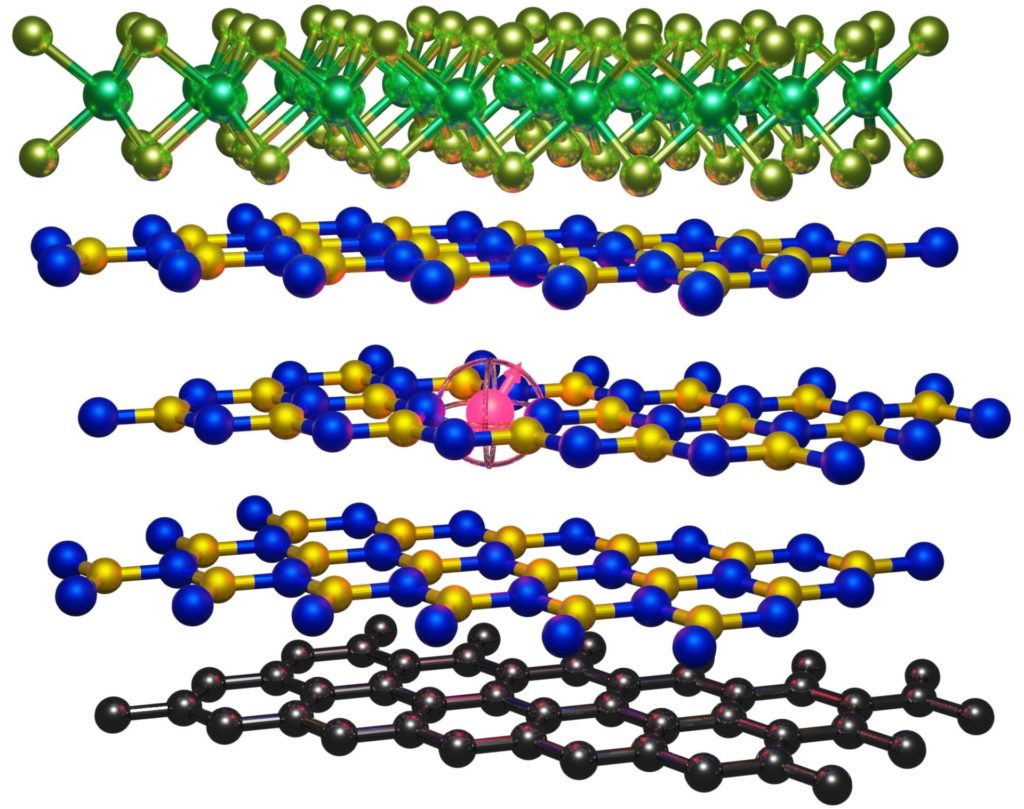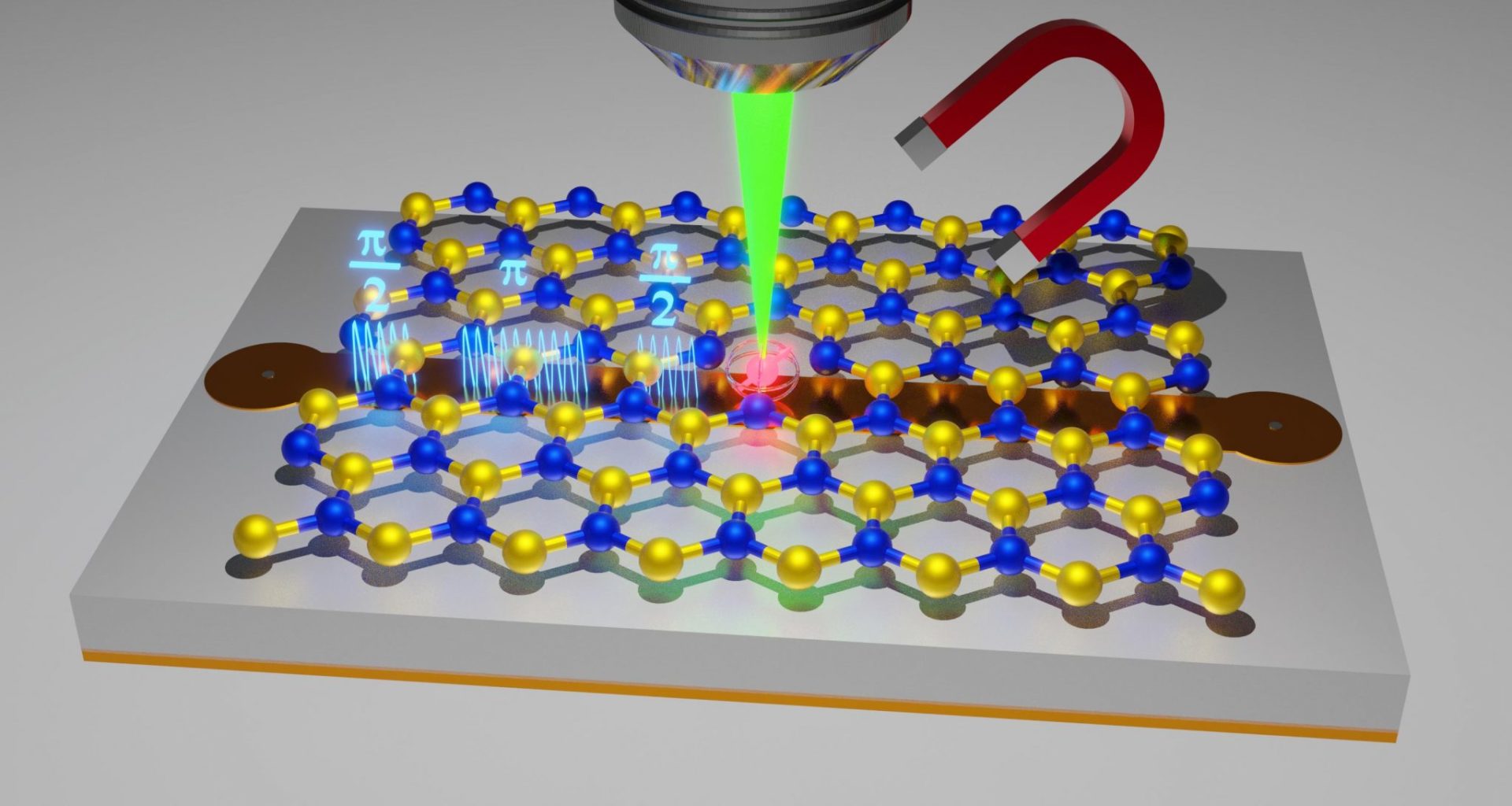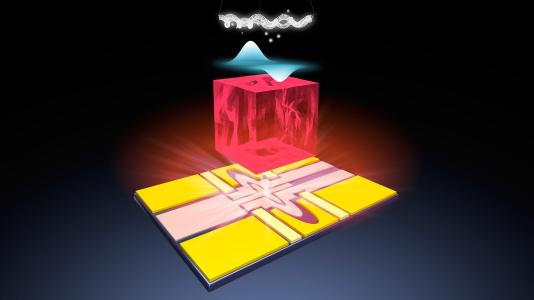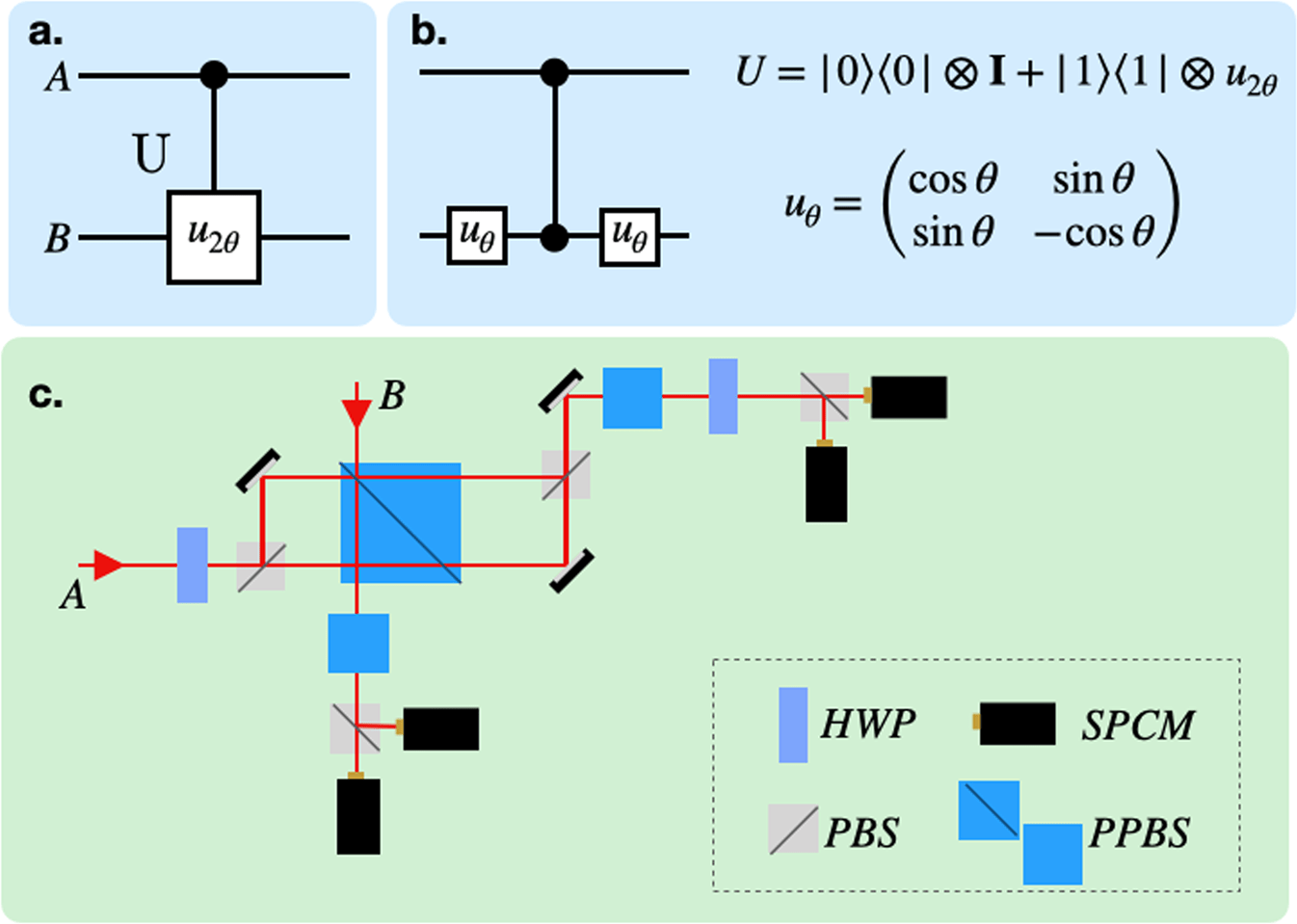About a year ago, a team from the Institute of Physics at Julius-Maximilians-Universität (JMU) Würzburg in Bavaria, Germany, succeeded in creating spin defects, also known as qubits, in a layered crystal of boron nitride and identifying them experimentally.
Recently, the team succeeded in taking an important next step: the coherent control of such spin defects, and that even at room temperature.

The contactless manipulation of the “gyroscope” (the spin state) was achieved through the pulsed high-frequency electromagnetic field, the resonant microwaves. The JMU researchers were also able to determine how long the “gyroscope” maintains its new orientation. Strictly speaking, the deflection angle should be seen here as a simplified illustration of the fact that a qubit can assume many different states, not just 0 and 1 like a bit.
What does this have to do with sensor technology? The direct atomic environment in a crystal influences the manipulated spin state and can greatly shorten its coherence time.
The JMU team’s next goal is to realize an artificially stacked two-dimensional crystal made of different materials, including a spin-bearing component. The essential building blocks for the latter are atomically thin boron nitride layers containing optically active defects with an accessible spin state. (SciTechDaily)
The paper has been published in Science Advances.



